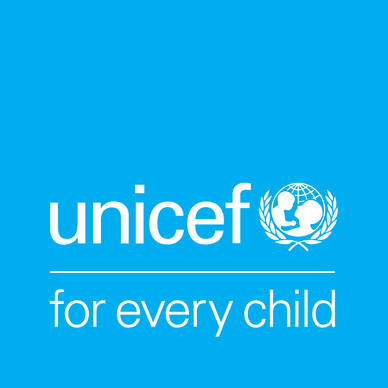The full media briefing is available here.
Syria virtual visit is available here and here, and Jordan visit here.
All material is available here.
11 MARCH 2021: Thank you very much colleagues and thanks to the UNICEF team in Syria and in particular to the team in Aleppo for this very good field trip. I hope you enjoyed this and saw how important it’s the work being done on the ground.
I think it’s so important to see how we are able to make a difference despite the global COVID-19 pandemic. I felt I was back in Aleppo, this beautiful city in the north of Syria.
I hope this trip has helped you to get a better idea about UNICEF’s work in Syria through these excellent dedicated staff.
Members of the press corps, colleagues and friends,
Thank you for coming to this press conference.
UNICEF is very grateful to your interest that has been with us over the years. For the past decade, you the members of the press corps have been “a part of the extended UNICEF family” through ongoing coverage of the impact of this brutal war and you’ve been able to raise attention, you’ve been able to help us advocate and you’ve been able to help us make a difference.
Ten years. It’s a whole decade, it’s half a generation. It is beyond belief that this war has been going on for that long.
This has been a war that has had a staggering impact on every single child from Syria.
When the war first started, I traveled with a group of Emergency Directors to Syria. And at the time we aimed at expanding humanitarian action in Syria by conducting the first cross-line mission. As you know, Syria pre-2011 was a middle-income country with almost no humanitarian response, so we had to gear up. None of us back then thought that this war would go on for ten long years.
Yet, here we are. The beautiful and diverse country that is Syria has been riddled by one of the most brutal wars in recent history.
The toll that the fighting has had on millions of people including, and more specifically, on children, on the mosaic of social fabric, on the economy, let alone on the infrastructure including basic services is tremendous.
Let me give you a few points of information and data that could be useful:
- Firstly, last year has been exceptionally hard for Syria’s children with the triple effect of the ongoing war, the economic crisis and the COVID-19 pandemic.
- Inside Syria, there are 6.1 million children in need of assistance today. This is an increase of 20 per cent only in the past year; that’s 90 per cent of Syrian children
- The price of the average food basket, what families eat every week, has skyrocketed in the last year and has increased over 230 per cent.
- According to latest estimates, more than half a million children under the age of five in Syria suffer from stunting as a result of chronic malnutrition.
We saw the catch-up education program, going to kind-of formal education;
- One in three schools can no longer be used because they were damaged, destroyed, or are used as shelters for displaced families or, in some cases, being used for military purposes;
Let me turn to the issue of the fighting, and specifically the issue of children directly affected by conflict, so according to the latest verified data, between 2011 and 2020:
o More than 12,000 children were verified as killed or injured[1]; the numbers are unfortunately much higher, but this is direct report we received.
o More than 5,700 children – some as young as seven years old – were recruited into the fighting. Nearly all of them served in combat roles at the front lines;
o More than 1,300 education and medical facilities and personnel came under attack.
The war is leaving a significant impact on children’s mental health, with both short and long-term implications. One in four children are now displaying symptoms of psychosocial distress. This is double what we had last year
I want to zoom in on one situation of particular concern, the situation in northeast of Syria. I visited northeast Syria in December; I visited the Al-Hol Camp. And I want to say that the living conditions in the camp are appalling and while we continue to deliver services there, the camp is not where children should be. There are 41,000 children in Al-Hol including Syrian children, of these children there are nearly 27,500 children from 60 nationalities and these children should not be there. They should be at home, with families, in their communities or countries of origin.
So, there are a lot of terrible things that have happened to children over the last decade, but I also want to say that there is hope. My main message to you today is that the “children of Syria” are far from being a “lost generation”. Through Syria’s children, including the Syrian children we saw in the videos today, we learn about courage, we learn about perseverance and resolve. The determination of children to learn, overcome the odds and build a better future is admirable.
During my several visits to Syria, I witnessed that firsthand. It was mothers telling us consistently that the most important thing is to get children education no matter where they were and who controls the territory where they lived, because that is their future.
It’s through children like Saja who we saw at the beginning who never give up, despite losing a leg, she continues to play football as you saw and wants to become a sports teacher! What she told us is “we cannot let a moment, she cannot let a moment define her life.”
We should continue supporting Syria’s children wherever they are: inside Syria, in the neighbouring countries that have done so much and beyond.
And if you allow, let us turn our second part of the virtual visit to Syria, this is a trip that will take place in neighbouring country of Jordan. And then we’ll have an opportunity to discuss and go through your questions.
Thank you to our teams in Jordan for this excellent field trip.
Colleagues, UNICEF in Jordan has expanded its operation in response to the refugee influx very early since late 2012 as the influx of refugees continues. Our teams continue to be there, as we saw, in the camps and across the host communities to deliver aid and assistance to children.
Like Jordan we have teams in all the host countries including Lebanon, Turkey, Iraq and Egypt.
The number of refugee children in neighbouring countries has increased more than ten-fold, since the beginning of the crisis, to 2.5 million Syrian refugee children since 2012.
Syria’s neighbouring countries, the countries I just mentioned; Lebanon, Jordan, turkey Iraq and Egypt have borne the brunt of this outflow despite having their own challenges economically. These countries host 83 per cent of the total number of Syrian refugees around the world, putting a strain on their services.
The generosity and the “open-door” that people and governments in Syria’s neighbouring countries have shown is exemplary, and It is not to be taken for granted. Despite everything: economic crises, political instability, this generosity has never stopped. It continues a decade on. Syria’s neighbouring countries themselves need our support more than ever. I have to say, I’m specifically concerned that Lebanon gets support, Lebanon is in a difficult situation, as you remember the explosion in August, and we very much are working in Lebanon not just to support refugee children but of course to meet the needs of Lebanese children including in the public education system that caters to both.
Again as I did last time, let me give you a couple of pieces of information on some of the results in this case of UNICEF’s work, this includes our work inside Syria and in the neighbouring countries; so with UNICEF’s support over the last year;
– Nearly 900,000 children received routine immunization or vaccination against measles.
– Over 400,000 children have been reached with psychosocial support; and I saw a question about that, much of the videos that you saw both in Jordan and in Syria it would be the same in Lebanon, in Turkey and wherever we would take you in this virtual field trip there would be an emphasis on the importance of education and learning.
– with UNICEF’s support we’ve been able to access over 3.7 million children who have benefited from formal and non-formal education. Overall, 5 million children are learning as we speak today and each of those is a ray of hope.
– We’ve been able to support over 5.4 million people with access to safe water through improvements to water supply systems, as you saw in Zaa’tari camp.
– In response to the COVID-19 pandemic, we reached 55 million people with awareness raising material and health measures and distributed personal protection equipment to front line workers including masks, robes and face shields and are supporting the countries to get the needed vaccines and get beyond the issue of vaccine nationalism.
So, what does it all mean and where do we go forward?
I mean thanks to all the efforts from partners, governments, dedicated personnel, the civil society, partners and of course teachers, we continue to have 5 million children who have access to learning.
This is an example, an indication to the joint efforts. For without the work and without everyone coming together we would have virtually no children learning in Syria and around Syria – no Syrian child learning – and we would be at risk of lost generation.
In the coming years, we will continue to focus on learning, and we’ll continue focus on responding to COVID-19, including the delivery of vaccines. We will continue our focusing on psychosocial support to children and keeping them safe from violence and harm.
Returning to the COVID-19 situation for a moment, let me just say that we with WHO and other organizations are member of the COVAX facility, and one of the key things we’ll be doing in the weeks ahead is making sure that we facilitate the equitable delivery of vaccines across Syria including in the northwest of Syria and that we support host governments including in neighbouring countries with reaching priority groups including those among the refugees. Jordan is in fact the first country in the world to start vaccinating refugees. All of the neibouring countries have included refugees in their plans, we need to make sure that follow-up happens, that this is operationalized, that vaccines go from frontline workers to people with underlying conditions to the elderly and so on. We hope that all countries hosting refugees will follow suit. We, WHO and other sister agencies are there to support the countries as they go through this.
Colleagues, this concludes our virtual visit. I think we now have the chance to turn to some of your concerns and some of your questions. And Juliette is going to help us manage this portion of our gathering today.
ENDS
Notes to editors:
For more information, please contact:
Alexandra Murdoch, 0207 375 6179, [email protected]
Unicef UK Media Team, 0207 375 6030, [email protected]
About Unicef
UNICEF works in some of the world’s toughest places, to reach the world’s most disadvantaged children. Across more than 190 countries and territories, we work for every child, everywhere, to build a better world for everyone.
The UK Committee for UNICEF (UNICEF UK) raises funds for UNICEF’s emergency and development work for children. We also promote and protect children’s rights in the UK and internationally. We are a UK charity, entirely funded by supporters.
United Kingdom Committee for UNICEF (UNICEF UK), Registered Charity No. 1072612 (England & Wales), SC043677 (Scotland).
For more information visit unicef.org.uk. Follow UNICEF UK on Twitter, LinkedIn, Facebook and YouTube.


